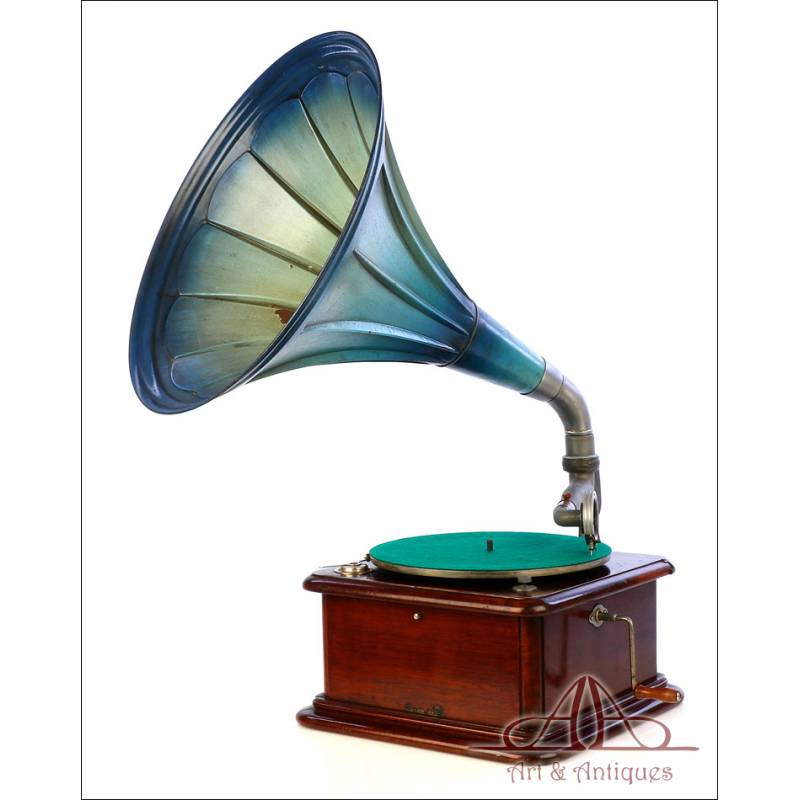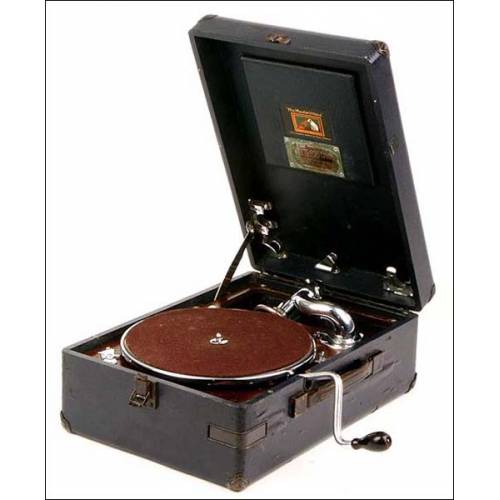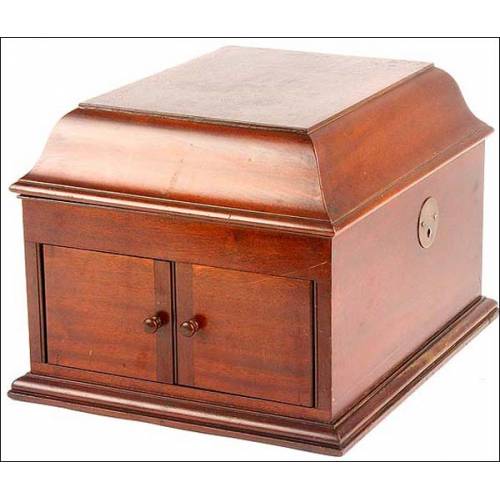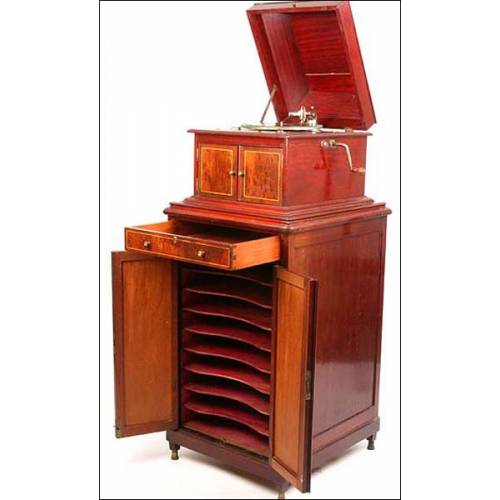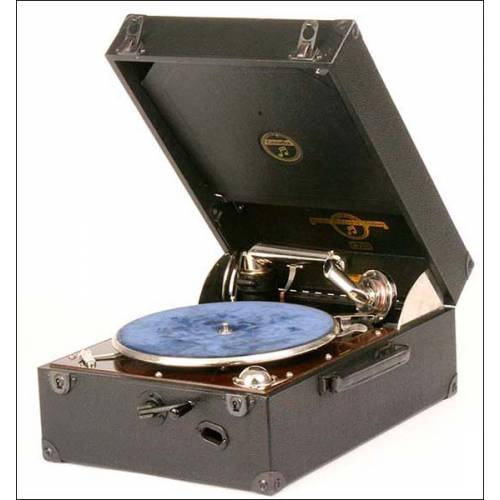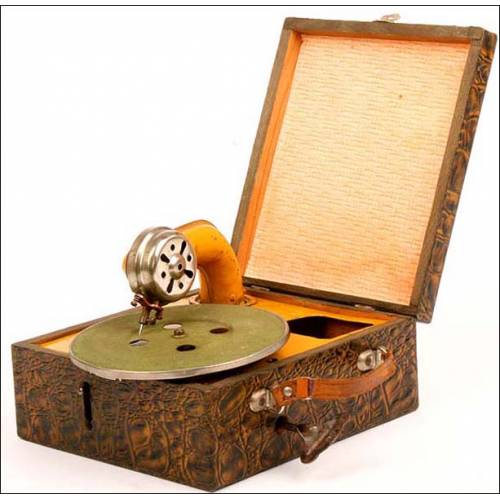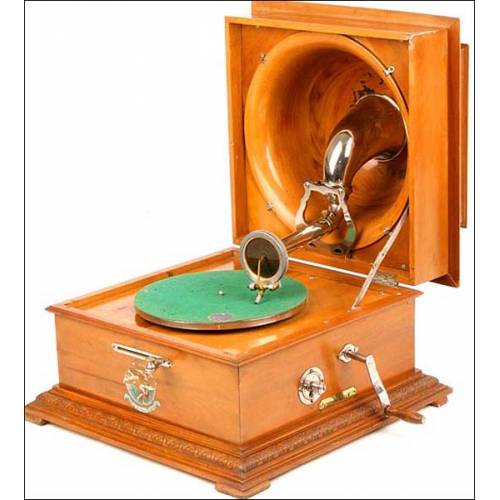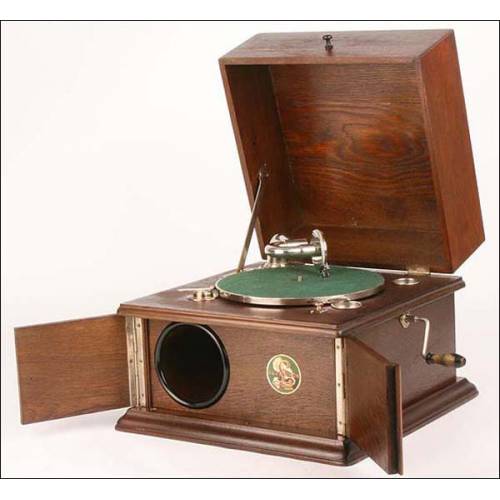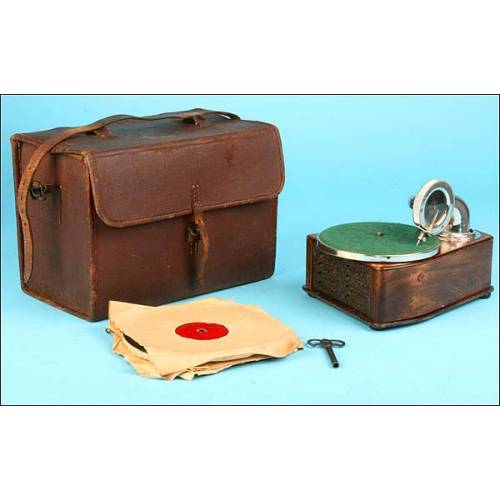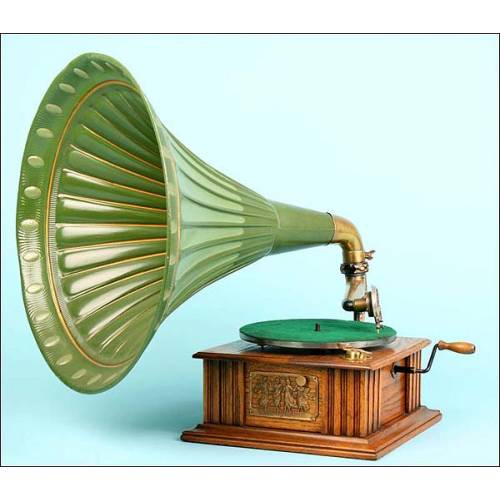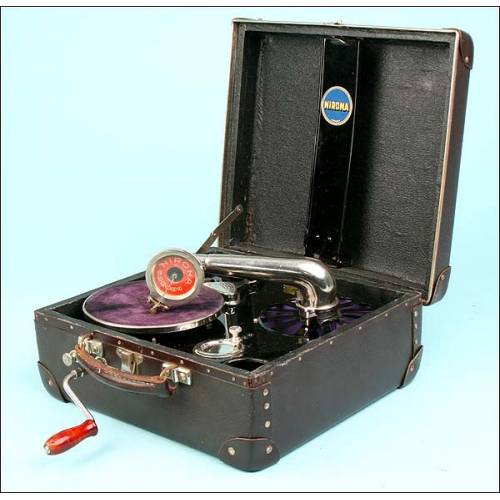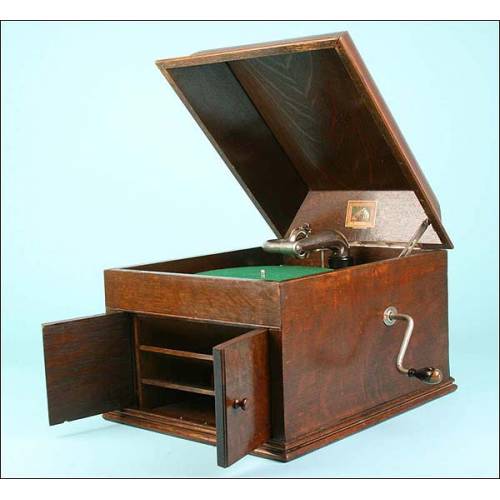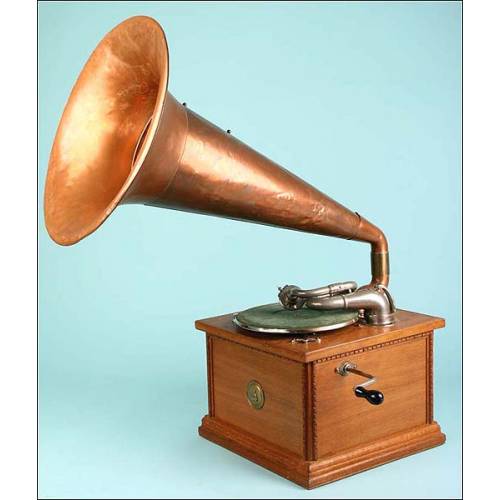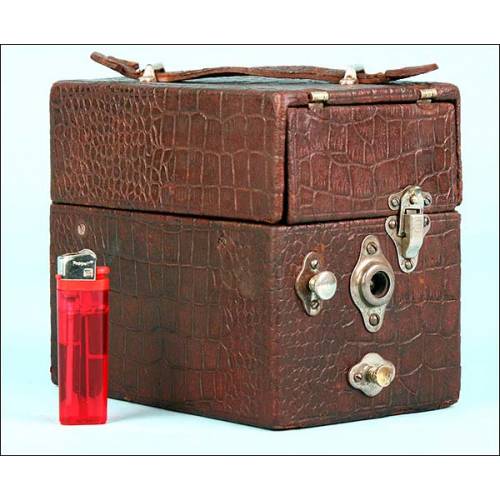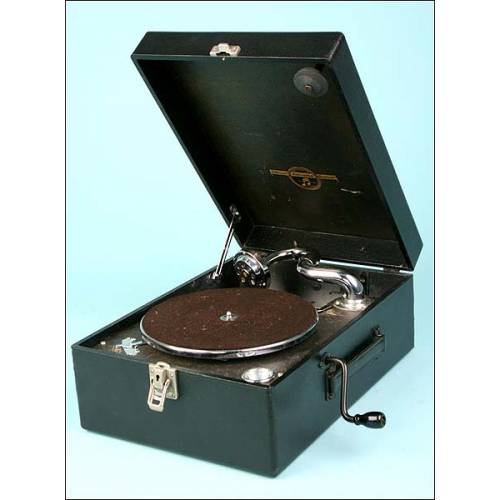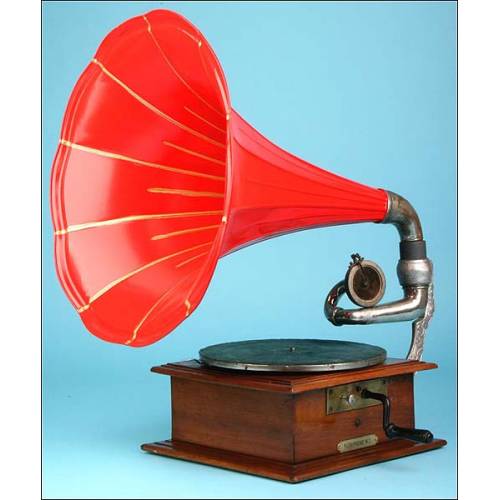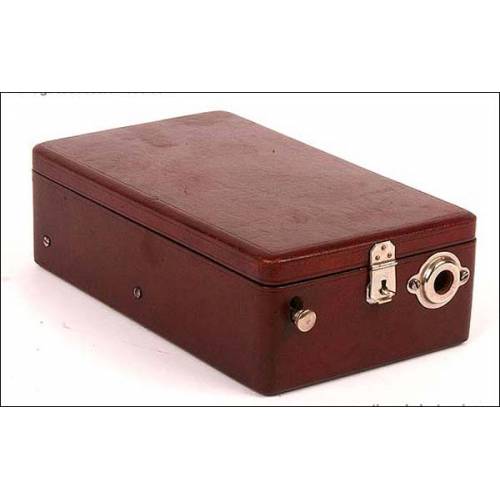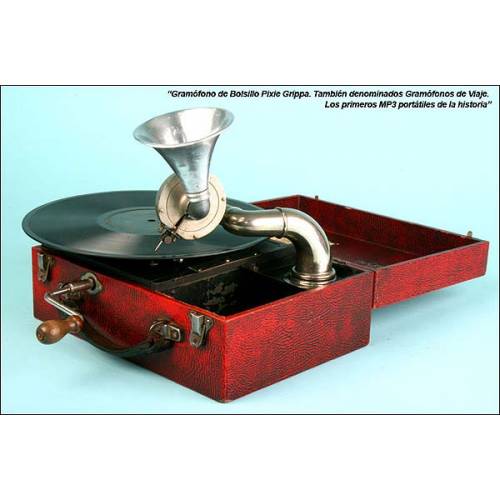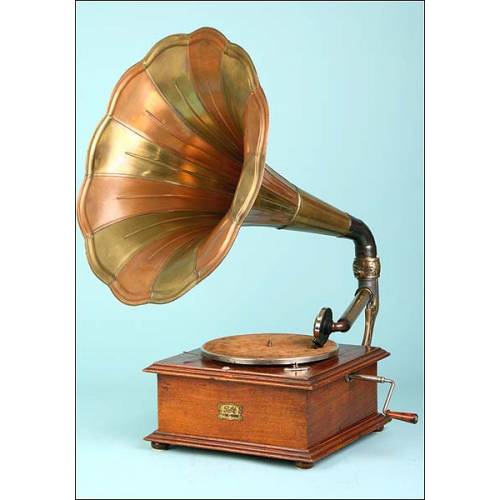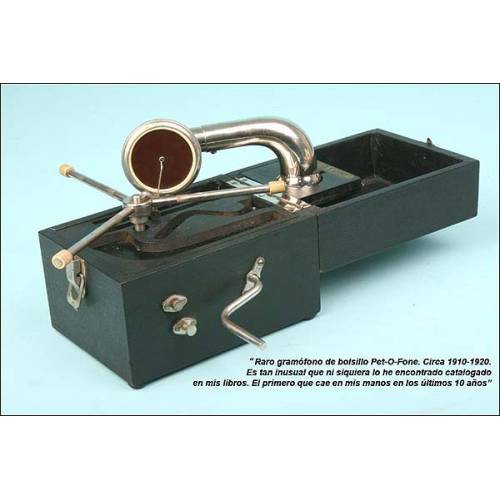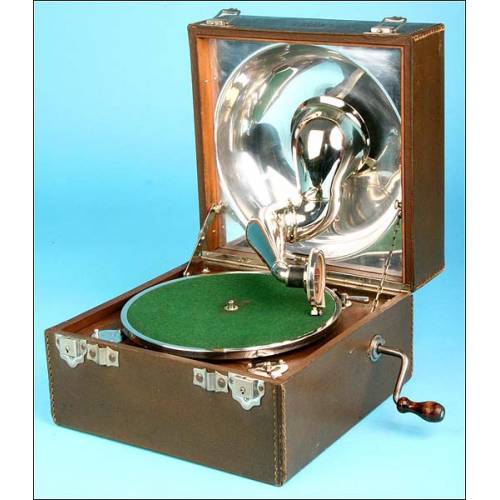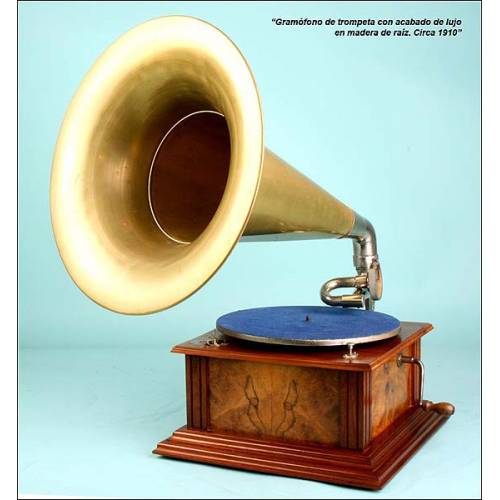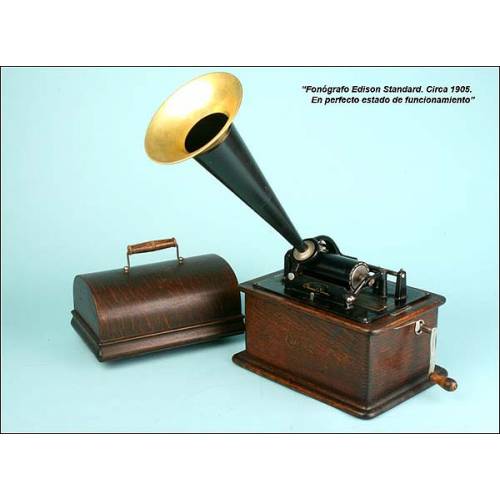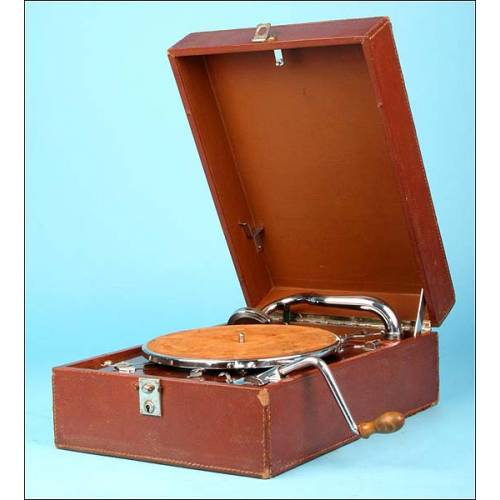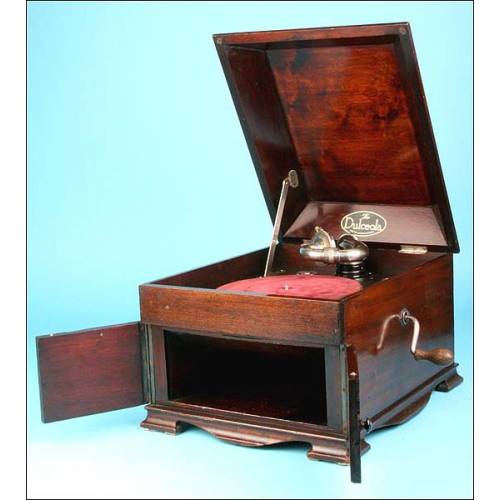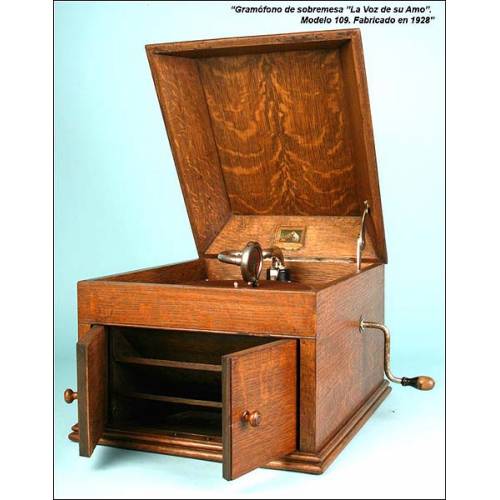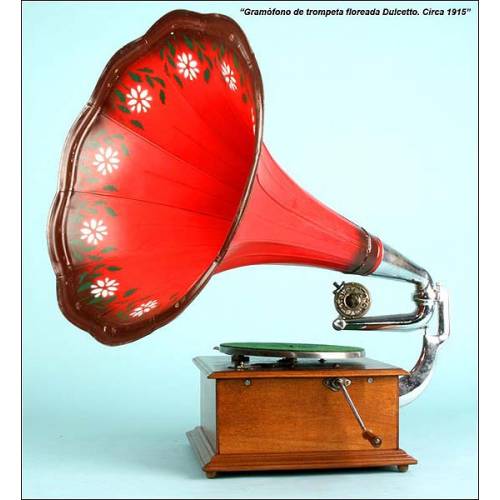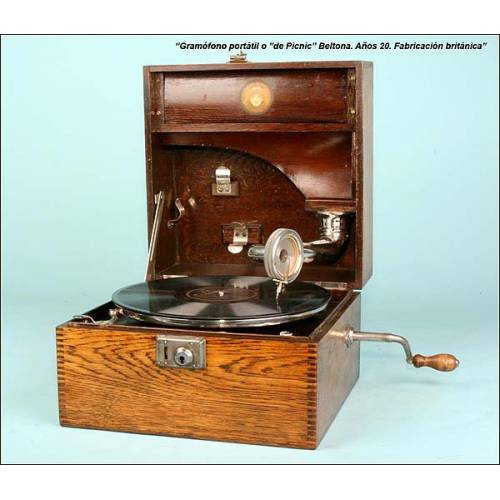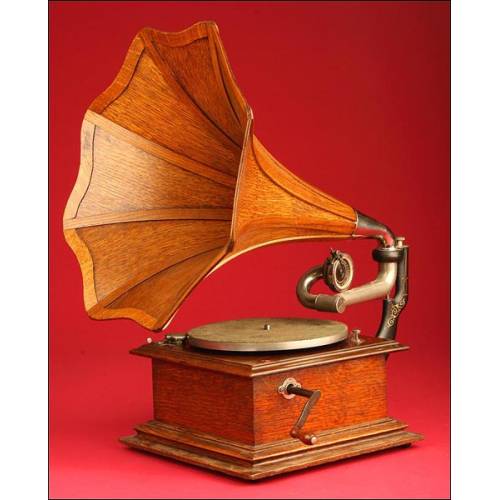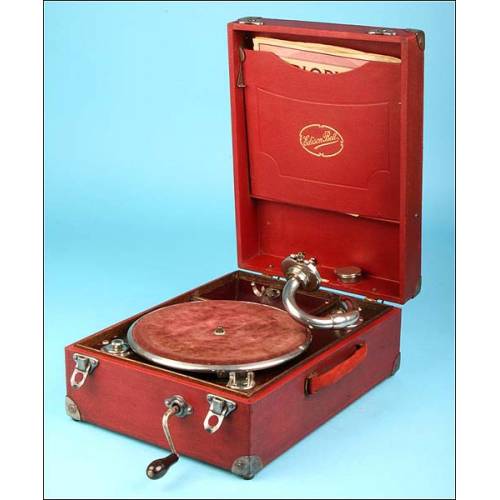C-959
Antique Odeon horn gramophone with Mahogany Case. Germany, Circa 1920
Superb Odeon horn gramophone with impressive horn in degraded blue. It works perfectly. Very decorative.
Sold!
Wonderful antique Odeon horn gramophone or phonograph in wooden mahogany box, made in Germany circa 1920 and as well preserved as functional. The gramophone stands out for several reasons: its spectacular early-20th-century look, its great condition and its excellent working order. The motor has been cleaned and overhauled so it can be used to play ancient gramophone records with a high-quality sound. The box is made of solid-mahogany wood and boasts a simple and stylish designs, being also in quite good condition. The wood is protected by a fine French-polish finish that provides it with a warm satin glow. At one of the sides we can see the remains of an ancient decal, probably with the name and address of the original distributor. The gramophones reproducer is a well-preserved original Odeon model. It bears the brand name printed in golden lettering on a pale blue background, decorated with golden medals and branches. The metal elbow that holds the arm which connects the horn and the reproducer is decorated with embossed floral motifs, with a matt discreet finish. The horn itself is a really impressive piece: it is made of metal sheet and preserves the original finish, a lovely blue paint with different shades of blue which create a great ombré look, both inside and outside. The finish is finely preserved, a detail that surely increases the gramophones decorative interest. Any lover of old-time music devices will appreciate this antique Odeon horn gramophone with mahogany wooden box, a real early-20th-century jewel. Dimensions: Box: Side: 14.8 in / 37 cm. Height: 7.6 in / 19 cm. Horn: Length: 24 in / 60 cm. Mouths Width: 20.4 in / 51 cm.Odeon Gramophone Company - History Odeon emerged in 1904 as the registered trademark of the International Talking Machine GmbH, 24 Lehderstrasse, Berlin. The company was founded by Max Strauss and Heinrich Zunz with financial backing from Frederick M. Prescott. Essentially, like all early companies, it existed to sell talking machines (Gramophones) into the domestic market. For most early companies, the manufacture of records themselves was not the first consideration, but it was found necessary in order to increase the sale of machines. In 1904 Odeon launched the first double-sided gramophone records. In 1909 it created the first recording of a large orchestral work and what may have been the first record album when it released a 4-disk set of Tchaikovsky's Nutcracker Suite with Hermann Finck conducting the London Palace Orchestra. That same year Odeon became a part of the Carl Lindström Company, which also owned Parlophone, Fonotipia and other labels. The Lindström company was acquired by the English Columbia Graphophone Company in 1926. In 1931 Columbia merged with Electrola, HMV and other labels to form EMI.

